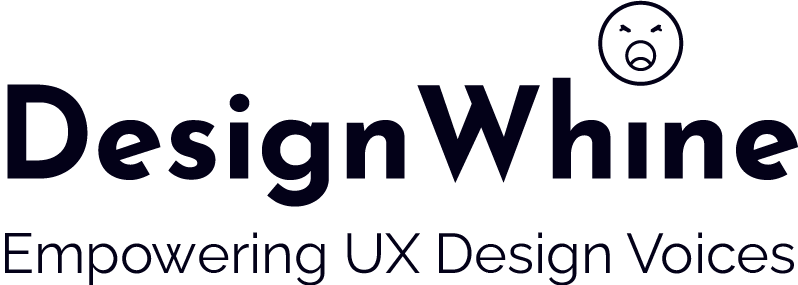Have you ever marveled at the intuitive design of a Samsung smartphone or the sleek interface of an LG smart TV? These experiences are the result of South Korea’s thriving UX design education ecosystem, which has evolved dramatically since the country’s first HCI workshop in 1990. This robust UX design education in South Korea continues to shape innovative and user-friendly technology.
From KAIST’s pioneering VR and Industrial Design Labs to dedicated UX teams at tech giants like Samsung and LG, South Korea has cultivated a unique blend of academic rigor and practical application in UX design. South Korean institutions and companies work hand in hand to push the boundaries of user experience, with Samsung and LG leading the charge in integrating advanced design principles into their products. This synergy between educational excellence and industry innovation has propelled South Korean companies to the forefront of global markets, setting new standards in UX design.
In this article, we’ll take a look at South Korea’s top UX design graduate programs and industry resources. We’ll explore curricula across design, engineering, and interdisciplinary fields, alongside resources like the Toss Simplicity conference and Design Spectrum podcast. Our goal is to show how UX design education in South Korea builds theoretical knowledge, complemented by resources that bridge theory and practice in the field.
Types of UX Design Graduate Programs in South Korea
Graduate programs in South Korea are typically divided into general graduate schools and specialized graduate schools. General graduate schools usually offer a full-time, four-semester program where students focus entirely on UX research. Specialized graduate schools, on the other hand, often provide five-semester programs designed for working professionals who are balancing their studies with their careers. In the final semester of specialized graduate schools, students typically complete a graduation thesis or project.
The categories of these programs are heavily influenced by the academic backgrounds of the professors. Therefore, we will introduce them into three categories based on this factor.
Design Based Programs
Seoul National University Graduate School Visual Communication Design Program is a full-time, four-semester course offering a comprehensive understanding of design, including UX aspects. Led by Professor Juhyun Eune, Intermedia lab focuses on interactive multimedia design within visual communication. The program boasts strong industry collaborations with major corporations such as Samsung, Hyundai, and LG on various design projects. This engagement with industry provides students valuable exposure to real-world applications of visual and interactive design principles.

Hongik University Graduate School of Film, Digital Media & Communication Interaction Design Program is a five-semester course. The program typically consists of four semesters of coursework followed by a final semester for thesis writing. As a specialized graduate school, it provides evening classes, making it ideal for working professionals. The curriculum covers all aspects of human-machine/computer interaction, focusing on interactive digital media design, screen-based design, and content creation across various domains. The program explores new design possibilities brought by interactive media in different fields, providing comprehensive education at the intersection of technology and design.

Engineering + Design Programs
KAIST Department of Industrial Design Master of Science Program is a full-time, four-semester course offered through its general graduate school. This program focuses on UX design with an industrial engineering foundation, emphasizing the study of user experiences in IoT-based systems by integrating hardware and software. It’s particularly well-suited for students with engineering backgrounds looking to expand their perspective into design. The department features several notable research labs, including Professor WooHun Lee’s Wonderlab, Professor Tek-Jin Nam’s CIDR Lab, Professor Youn-kyung Lim’s Creative Interaction Design Lab, and Professor Sangmin Bae’s ID+IM Design Laboratory.
Interdisciplinary Programs
Seoul National University’s Graduate School of Convergence Science and Technology Intelligence Information Convergence Science Program is a full-time, four-semester course. It features Professor Joon Lee’s User Experience Lab, which takes a socio-cultural approach to UX research, diverging from traditional technology-based methods. The lab employs flexible research techniques to observe users surrounded by various information media and technologies. Depending on the problem, they utilize interviews, behavioral observations, experiments, surveys, log analysis, and data mining. This approach allows for insightful user experience observations, behavior pattern analysis, and user needs identification.
The Graduate School of Yonsei University Management of Technology Program hosts the Yonsei HCI Lab, led by Professor Jinwoo Kim. Renowned for his textbooks “Service Design for Experience” (2017) and “Introduction to Human Computer Interaction” (2012), Professor Kim guides the lab’s focus on Human AI Interaction. The lab explores AI’s limitations in emotional, social, and behavioral realms, contrasting them with human strengths in intuition, emotional intelligence, and social skills. Despite humans’ lower computational abilities, the lab aims to understand the complementary strengths and weaknesses of humans and AI, developing effective principles for their interaction.
Professional Resources
While South Korea’s UX design education lays a strong foundation, it’s the vibrant ecosystem of professional resources that truly sets the country’s design scene apart. From cutting-edge conferences to insightful podcasts, from comprehensive design pattern libraries to academic journals, these resources form a rich tapestry of knowledge and inspiration for UX designers at all career stages. Let’s dive into four key pillars of South Korea’s UX design community: the Toss Simplicity conference, the Design Table podcast, UI/UX design pattern libraries like WWIT and Designus, and academic publications such as ADR and Design Works. Each of these resources offers unique insights into the thriving world of Korean UX design, bridging the gap between theory and practice in innovative ways.
Toss Simplicity: A Premier UX Design Conference in South Korea
Toss is a fintech super app in South Korea with over 16 million monthly active users. Since 2021, Toss has been hosting an annual online conference called ‘Simplicity’. At this event, around 20 designers from various roles within Toss serve as keynote speakers. These include UX writers, UX researchers, product designers, brand designers, graphic designers, interaction designers, and platform designers. They share case studies and insights on how Toss has solved problems through design. In its inaugural year, ‘Simplicity 21’ attracted significant attention, with pre-registrations exceeding 17,000 people.
Design Table: A Podcast Sharing Insights from South Korea’s UX Design Industry
Design Table, a popular podcast in South Korea’s UX design community, emerged from the broader Design Spectrum initiative. Founded by Jihong Kim, a former Samsung Electronics UX designer, Design Table has become a go-to resource for designers seeking practical industry insights. The podcast covers a range of topics vital to UX professionals, including career transitions, Silicon Valley design practices, and team-building strategies from a designer’s perspective. Its success is evident in its impressive listener base, with episodes reaching up to 100,000 plays.
WWIT & Designus: South Korean UX Design Pattern Libraries
We’ll now introduce library sites that offer insights into South Korea’s UI/UX trends, similar to Mobbin. WWIT is a library site created by product designer Yujin Lee, where users can explore Korean mobile design patterns. Starting as a side project, it now attracts over 1,000 daily visitors. Designus is another library site that showcases app references, web references, and store screenshot references. It also features a community where users can vote on UI/UX patterns and share their opinions.
ADR and Design Works: Essential Resources for Design Research in South Korea
For those keen to stay abreast of design research trends in South Korea, the publications of the Korean Society of Design Science are invaluable resources. Established in 1978 as the country’s pioneering design research organization, the society publishes two notable journals. The first is ADR (Archives of Design Research), South Korea’s only SCOPUS-indexed international journal in the design field. The second is Design Works, a journal registered with the Korean Research Foundation’s KCI (Korea Citation Index). These publications offer a comprehensive view of the latest developments and trends in Korean design research, making them essential reading for design professionals and researchers alike.
Key Takeaways
As you’ve seen, South Korea’s UX design scene is a vibrant mix of academic rigor and practical innovation. But don’t just take our word for it – dive in and experience it yourself. Here are some next steps to consider:
- Consider reaching out to the graduate programs we’ve mentioned about research opportunities. While lab communication is primarily in Korean, many are open to discussing possibilities with international students. Don’t hesitate to make contact if you’re interested in their cutting-edge UX research.
- Explore the Toss Simplicity Conference sessions on YouTube. All keynotes from 2021 to the present are fully available. Even if you don’t speak Korean, you can still gain insights from top Korean UX professionals by using YouTube’s auto-translation feature.
- Browse through WWIT and Designus, the UI/UX design pattern libraries. They’re goldmines of inspiration for your next project. WWIT offers a comprehensive collection of Korean mobile app designs, while Designus provides a wider range of digital design references including web interfaces. Both platforms are regularly updated with the latest design trends from South Korea’s tech scene.
Remember, the UX field evolves rapidly. This information is current as of August 2024, but keep exploring to stay updated on the latest developments in South Korea’s dynamic UX design landscape.






wow thank you it was very helpful!
Hello Aiaru, glad you found our article helpful!
Hi! I’m Daniela from Colombia 🙂 I will apply for the GKS scholarship soon and I want to study a Master in UX Design. In fact, it was really hard to find information about masters in UX in South Corea because everything was in korean and I am still learning it. However, I’m gladly I found this incredible article that has helped me a lot in order to find the masters that I wanted.
PD : If I have my degree in another field of study different from Design or Engineering, can I still apply for the masters program that you’ve mentioned on the article?
Thank you so much!
Hello Daniela, apologies for the late reply! Yes, even if you have a degree in any other area as an undergrad, you can still go ahead for a design degree.
If you need more help, please don’t hesitate in trying out our newly launched community the DesignWhine Lounge – http://www.designwhine.com/lounge.